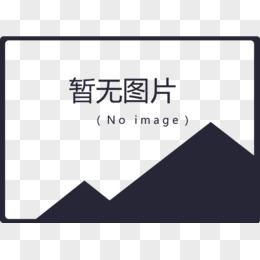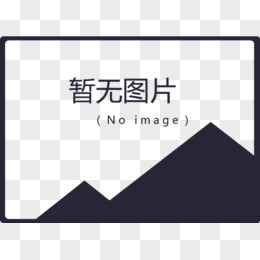
| UIWebView控件中加载资源的方法 |
| - (void)loadData:(NSData *)data
MIMEType:(NSString *)MIMEType
textEncodingName:(NSString *)encodingName
baseURL:(NSURL *)baseURL
|
| - (void)loadHTMLString:(NSString*)string
baseURL:(NSURL*)baseURL
|
| - (void)loadRequest:(NSURLRequest*)request |
下面我们就利用这些方法,在iOS平台上使用UIWebView控件来访问叶小钗兄所提供的web页面。
//ViewController.h
@interface ViewController : UIViewController
{
UIWebView *webView;
}
//ViewController.m
- (void)viewDidLoad {
[super viewDidLoad];
webView = [[UIWebView alloc] initWithFrame:[[UIScreen mainScreen] bounds]];
//load yexiaochai's html
NSBundle *thisBundle = [NSBundle mainBundle];
NSString *path = [thisBundle pathForResource:@"webapp/hotel/index" ofType:@"html"];
NSURL *baseURL = [NSURL fileURLWithPath:path];
NSURLRequest *urlReq = [NSURLRequest requestWithURL:baseURL];
[self.view addSubview: webView];
[webView loadRequest:urlReq];

| UIWebView控件中涉及Native和Web交互的方法 |
| - (NSString*)stringByEvaluatingJavaScriptFromString:(NSString *)script |
| - (BOOL)webView:(UIWebView*)webView
shouldStartLoadWithRequest:(NSURLRequest*)request
navigationType:(UIWebViewNavigationType)navigationType
|
除此之外,iOS的UIWebView还有一些页面能否前进后退的属性以及控制它们前进后退的方法:
| UIWebView控件中关于页面前进后退的属性和方法 |
| canGoBack |
| canGoForward |
| - (void)goBack |
| - (void)goForward |
<uses-permissionandroid:name="android.permission.INTERNET" />
| WebView加载资源的方法 |
| public void loadUrl(String url); |
| public void loadUrl(String url,Map<String, String> additionalHttpHeaders); |
| public void loadData(String data,String mimeType, String encoding); |
| public voidloadDataWithBaseURL(String baseUrl, String data, String mimeType, Stringencoding, String historyUrl); |
<?xml version="1.0" encoding="utf-8"?>
<WebView xmlns:android="http://schemas.android.com/apk/res/android"
android:id="@+id/webview"
android:layout_width="fill_parent"
android:layout_height="fill_parent"
/>
当然,除了在layout中添加<WebView>元素之外,我们可以直接通过代码在Activity设置为WebView,
WebView webview =new WebView(this);[/align][align=left]setContentView(webview);
WebView myWebView = (WebView)findViewById(R.id.webview);
myWebView.loadUrl("file:///android_asset/webapp/hotel/index.html");
WebView myWebView = (WebView)findViewById(R.id.webview); WebSettings webSettings =myWebView.getSettings(); webSettings.setJavaScriptEnabled(true);
//ViewController.h
@interface ViewController : UIViewController
{
UIWebView *webView;
NSMutableString *msg;
UITextField *msgText;
UIButton *nativeCallJsBtn;
}
//ViewController.m
- (void)createNativeCallJsSample{
[webView loadHTMLString:@"<html><head><script language = 'JavaScript'>function msg(text){alert(text);}</script></head><body style=\"background-color: #0ff000; color: #FFFFFF; font-family: Helvetica; font-size: 10pt; width: 300px; word-wrap: break-word;\"><button type='button' onclick=\"msg('Js调用')\" style=\"margin:30 auto;width:100;height:25;\">web button</button></body></html>" baseURL:nil];
//创建一个UITextField,用来在native调用js时向js的函数传送参数
[self createNativeTextField];
//创建一个按钮,用来演示Native调用js
[self createNativeCallJsButton];
}
...
//native 调用 js
- (void)btnClickMsg{
[msg setString:@"msg('"];
[msg appendString:@"native调用js:"];
[msg appendString:[msgText text]];
[msg appendString:@"')"];
[webView stringByEvaluatingJavaScriptFromString:msg];
}

@Override
protected void onCreate(Bundle savedInstanceState) {
super.onCreate(savedInstanceState);
...
WebView myWebView = (WebView) findViewById(R.id.webview);
WebSettings webSettings = myWebView.getSettings();
//开启js支持
webSettings.setJavaScriptEnabled(true);
myWebView.loadData("<html><head><script language = 'JavaScript'>function msg(text){alert(text);}</script></head><body><button type='button' onclick= 'msg()'>web button</button></body></html>", "text/html", "utf-8");
evaluateJavascript(myWebView);
}
....
//Native调用JS
public static void evaluateJavascript(WebView mWebview) {
//判断版本调用不同的方法
if (Build.VERSION.SDK_INT >= Build.VERSION_CODES.KITKAT) {
mWebview.evaluateJavascript("msg('native call js')", null);
} else {
mWebview.loadUrl("msg('native call js')");
}
}
Hybrid交互设计
我想行文至此,各位应该已经明白了两大平台(iOS和Android)的Native端是如何调用JS代码的了。那么本小节则主要来聊一聊Web是如何调用Native的。Web和Native之间交互的第一步便是要约定好格式。由于我直接使用了叶小钗兄的Web部分,因此按照他设计的Web请求Native的模型:
requestHybrid({
//创建一个新的webview对话框窗口
tagname: 'hybridapi',
//请求参数,会被Native使用
param: {},
//Native处理成功后回调前端的方法
callback: function (data) {
}
});
//index.html中的实际例子
requestHybrid({
tagname: 'forward',
param: {
topage: 'webapp/flight/index',
type: 'webview'
}
});
hybrid://forward?t=1447949881120¶m=%7B%22topage%22%3A%22webapp%2Fflight%2Findex%22%2C%22type%22%3A%22webview%22%7D
十分清楚,这里我们交互使用的schema是hybrid://,在Native部分会监控Webview发出的所有schema://请求,然后分发到“控制器”hybridapi处理程序,Native控制器处理时会需要param提供的参数。下面就让我们来分别看一下iOS和Android是如何使用Web调用Native的吧。(这里我只是简单的实现了和叶小钗兄web交互的iOS部分,Android部分演示的是一个简单的Web调用Native的例子)。
iOS Web调用Native
在iOS平台,我们会用到shoudStartLoadWithRequest这个方法来捕获Web所发出的请求。下面我们就来看一段简单的演示吧。
//按照和web端规定的格式,获取数据
- (BOOL)webView:(UIWebView *)webView shouldStartLoadWithRequest:(NSURLRequest *)request navigationType:(UIWebViewNavigationType)navigationType {
NSURL * url = [request URL];
if ([[url scheme] isEqualToString:@"hybrid"]) {
NSString *actionType = request.URL.host;
//从url中获取web传来的参数
NSDictionary *actionDict = [self getDicFromUrl : url];
//根据web的指示,native端相应的做出回应
[self doActionType:actionType : actionDict];
return NO;
}
return YES;
}
//从url中获取web传来的参数
- (NSDictionary *) getDicFromUrl : (NSURL *)url{
NSArray* paramArray = [[url query] componentsSeparatedByString:@"param="];
NSString* paramStr = paramArray[1];
NSString *jsonDictString = [paramStr stringByRemovingPercentEncoding];
NSData *jsonData = [jsonDictString dataUsingEncoding:NSUTF8StringEncoding];
NSError *e;
NSDictionary *dict = [NSJSONSerialization JSONObjectWithData:jsonData options:nil error:&e];
return dict;
}
//根据web的指示,native端相应的做出回应
-(void) doActionType : (NSString*) type : (NSDictionary*) dict{
if ([type isEqualToString:@"forward"]) {
[webView goForward];
}
//打开一个新的Web
if([dict[@"type"] isEqualToString: @"webview"]){
[self web2Web: dict[@"topage"]];
}
//打开一个Native页面(我简化为了控件)
else if ([dict[@"type"] isEqualToString: @"native"]){
[self web2Native];
}
}

最左边的图是最开始的Web页面,点击“新开webview...”按钮之后,Native端又打开了一个新的Web页面,即中间的图所示。
最右边的图演示的是点击“跳转native...”按钮之后,Native端创建了一个Native的UI控件。
Android Web调用Native
下面就让我们演示一个小例子,不让Web调用JS的alert,相反使用Web调用Native的Dialog来显示提示吧。
首先我们要在Android应用中引入JavaScriptInterface。
import android.webkit.JavascriptInterface;
public class WebAppInterface {Context mContext;
WebAppInterface(Context c) { mContext = c; }
@JavascriptInterface
public void showToast(String toast) { Toast.makeText(mContext, toast, Toast.LENGTH_SHORT).show(); }}
之后,我们使用WebView的 addJavascriptInterface()方法将这个类和JS代码绑定,作为Web调用Native的桥梁。
WebView webView =(WebView) findViewById(R.id.webview);[/align][align=left]webView.addJavascriptInterface(newWebAppInterface(this), "Android");
最后,在Web端也做相应的实现。点击Web中的button会调用Native的showToast方法。
<inputtype="button" value="Say hello"onClick="showAndroidToast('Hello Android!')" />
<scripttype="text/javascript">
function showAndroidToast(toast) {
Android.showToast(toast);
}
</script>






